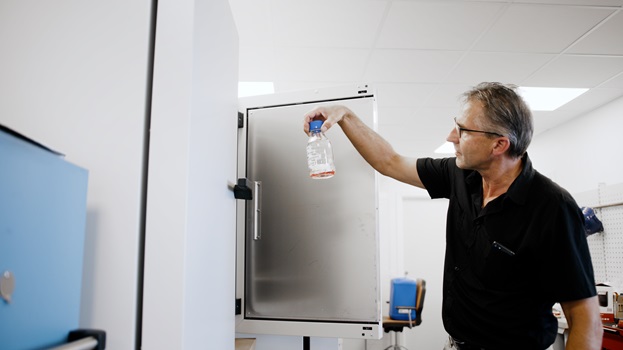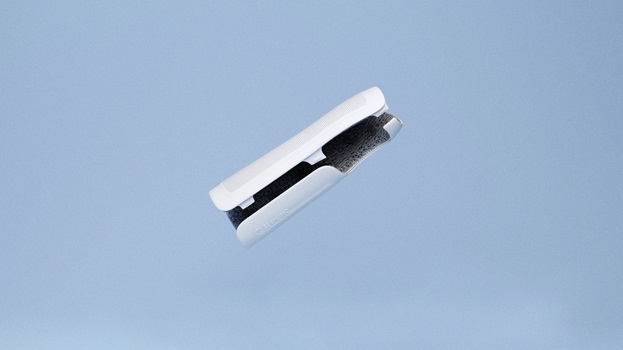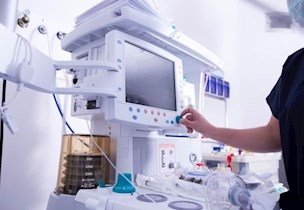Exo360 transforms fracture care with advanced metamaterial technology
The Exo360®Wrist adapts to swelling, offering stable, non-invasive fracture care. Testing has proven its durability and effectiveness, paving the way for patient trials and market entry.
A new approach to non-surgical trauma care
Exo360, co-founded by Mads Terndrup, MD PhD, has set out to modernise trauma care by replacing the ancient and outdated methods of treating broken bones. As a former orthopaedic surgeon, Mads saw firsthand the limitations of current non-surgical treatments. "We still rely on methods from the Crimean War era. Our mission is to create a cutting-edge solution to eliminate the need for unnecessary surgeries and elevate the quality of trauma care globally," he says.
Breaking the mould with advanced metamaterials
The primary issue with traditional casting is that it doesn't adjust to the body's natural changes during healing. Swelling goes down, and casts become loose, leading to a higher risk of surgery. "New research shows that for broken wrists, the cast loses its fit in about 48% of cases as swelling reduces, often resulting in the need for surgery," Mads says.
Exo360's breakthrough came with the development of elastomeric lattice metamaterials. They adapt to changes in swelling, providing continuous support to broken bones, which helps prevent the need for surgical intervention. The solution moves with the patient, ensuring optimal pressure on the fracture throughout the healing process.
Pioneering material testing for medical device compliance
Exo360 teamed up with us to ensure their material could withstand real-use conditions. The collaboration included consultancy on test protocols as well as running extensive tests on their product's mechanical and environmental durability, which is crucial for gaining medical device market entry. Furthermore, the purpose of the collaboration was to ensure that the same testing on Exo360 equipment and FORCE Technology equipment gave reproducible results.

These tests included:
- Cyclic loading: Simulating weeks of device use to confirm the material's long-term stability.
- Environmental exposure: Testing how the material holds up under moisture, temperature shifts and sweat.
- Safety and biocompatibility: Ensuring the material is safe for human use and in line with stringent medical device regulations.
FORCE Technology helped us validate what we believed but needed to prove—that our metamaterial is effective, resilient and safe. With the documentation we've gathered, we're ready to go through the process of securing CE marking, which is vital for market entry.Mads Terndrup / Co-founder, Exo360
Compliance ensured for market entry
By working with us, Exo360 has ensured that their technology meets the rigorous standards required for patient trials. This is key for positioning their solution for market entry and medical use in hospitals and clinics across Europe and, eventually, the U.S.
"FORCE Technology helped us validate what we believed but needed to prove—that our metamaterial is effective, resilient and safe. With the documentation we've gathered, we're ready to go through the process of securing CE marking, which is vital for market entry," Mads explains.
From concept to clinical trials
With successful test results, Exo360 is now gearing up for patient trials. The goal is to have some of the first patients wearing an Exo360 by the end of the year.

Next up and on the horizon: widespread product adoption and expanding trauma care to high-risk settings
With their wrist fracture solution ready for trials, Exo360 is targeting major hospitals in Northern Europe. Their next step is to collect clinical data to build a case for widespread adoption.
"We need solid clinical evidence to shift the market from traditional casts to our solution, and the results of our collaboration with FORCE Technology have been a game-changer for us. Now, we can document that our core technology works. We're ready to bring it to the medical world and also seek opportunities beyond traditional fractures. The platform could benefit trauma care in military settings, as well as other high-risk environments where quick, non-surgical treatment is critical. Trauma care gets less attention than it should despite being a leading cause of death globally. We aim to change that by providing versatile, dynamic solutions for various trauma applications, and can now document that our technology works," Mads says.
Related content

From single test to dedicated partnership with WSA
/Case

Market access for safe medical devices
/Page


